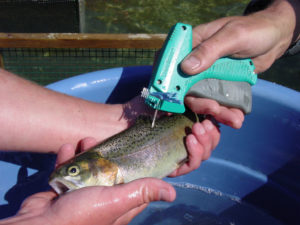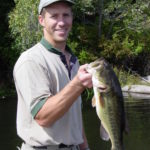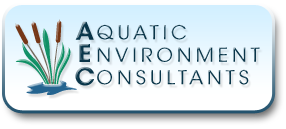
Eelectrofishing

The main objectives of electrofishing are stock assessment, health surveys, tagging, and eliminating species.
Seine Sampling

Proper Fish Management = Trophy Bass

 Fish Management for Population Maintenance
Fish Management for Population Maintenance
A healthy body of water should maintain a self-sustaining and well balanced fish population without much intervention. Natural deaths throughout the year happen in any lake or pond no matter how healthy, but a number of underlying issues can cause fish kills that require intervention for fish management. Just a few are excess rain that creates high salinity, sewage runoff and disease. Since lakes and ponds are complex systems with a delicate balance of factors, rapid environmental changes can be a detriment to fish survival.
One of the most common causes of sudden fish kills is low levels of dissolved oxygen in the water. Most fish species need 1 mg/L at the absolute least, but oxygen content should stay at or above 4 mg/L if you want to optimize health and eliminate diseases related to stress. If levels drop too low for even a couple hours, your fish population could rapidly collapse. At AEC, we can monitor your lake or pond’s oxygen content and keep an eye on the four possible culprits for rapid declines :
-
Rapid Pond Turnover
In regions with temperature fluctuation throughout the seasons, lakes and ponds stratify during the summer. This means that the colder water with higher density remains at the bottom of the body, and less dense, warmer water lingers at the top, close to the surface. The process of decomposition takes place in the cooler bottom, using up oxygen and leaving the bottom water void of it. When temperatures change, the water naturally turns over, which is usually not a problem.
Turnover becomes a problem if it happens too rapidly, for example, due to intense thunderstorms or other natural events. The oxygen-depleted water at the bottom mixes with the top water in such instances, causing fish kills. One common way to combat this problem is to install an aeration system that will prevent such dangerous conditions and keep the water properly de-stratified all year . Just ask, and AEC technicians will install one quickly and at a competitive price to protect your fish population.
-
Bacterial Growth
Each time a plant dies, it releases nutrients into the water that feed bacteria, and growing bacteria populations can deplete the oxygen that fish need to survive. Part of our lake and pond fish management at AEC will be to ensure remediation of bacterial growth without upsetting the existing balance of your aquatic ecosystem. We’ll perform effective vegetation management to keep nuisance plants from multiplying bacteria.
-
Overabundant Vegetation
Since aquatic flora at abundantly high levels can have the same effect as excessive algae on pond and lake oxygen levels, proper vegetation management goes hand-in-hand with effective fish management.
-
Excessive Planktonic Algae Blooms
Heavy planktonic algae blooms can lead to oxygen loss. We’ll perform physical, biological or material intervention to keep your algae levels where they need to be for optimal health throughout the entire waterbody.

 Fish Management for Population Maintenance
Fish Management for Population Maintenance